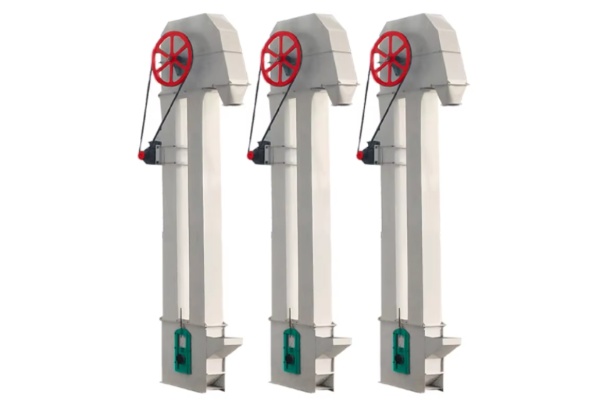Type selection of sand bucket elevator
Tuesday August-12 2025 16:08:27
Sand Bucket Elevator is a device used for vertical conveying of bulk materials. Its structure and function vary depending on the type. Common types include belt bucket elevators, chain bucket elevators, chain plate bucket elevators, and vertical screw elevators, depending on their traction mechanism and operating principle. These devices enable continuous vertical conveying of materials, with through puts ranging from a few tons to hundreds of tons per hour and lifting heights of several to tens of meters. In actual production, selecting the appropriate type requires a comprehensive consideration of factors such as the specific properties of the material, the required conveying capacity, and the required lifting height to meet specific process requirements.
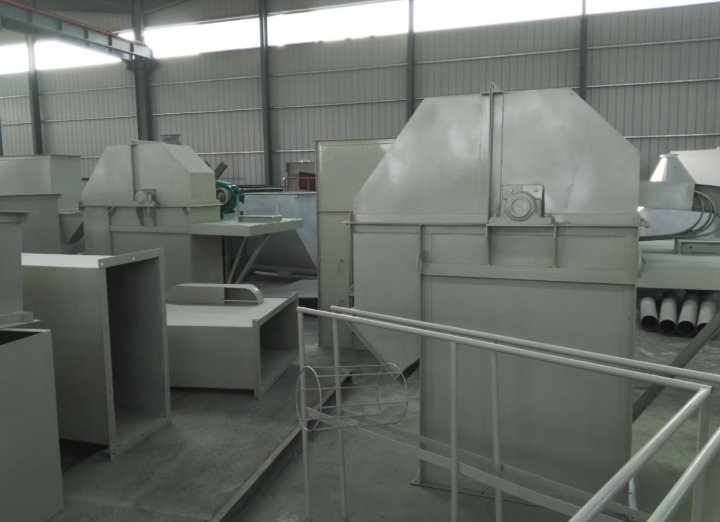
What are the types of sand bucket elevators?
Depending on their traction mechanism and operating principle, sand bucket elevators are primarily categorized into four types: belt bucket elevators, chain bucket elevators, chain plate bucket elevators, and vertical screw elevators. Each type has its own unique focus in terms of structure, performance, and applicable operating conditions.
Belt bucket elevators
Features: Smooth operation and low noise. Suitable for conveying dry, loose, and less abrasive materials such as grain, flour, and dry sand. It operates at a relatively high speed and is suitable for applications requiring high conveying capacity.
Advantages: Relatively lightweight, easy maintenance, and low cost.

Chain Bucket Elevator
Features: Robust construction and strong wear resistance make it suitable for conveying materials with high specific gravity, high abrasiveness, or high temperatures, such as crushed stone, slag, and cement clinker.
Advantages: Strong load-bearing capacity, stable and reliable operation, especially in harsh operating conditions, and long service life.
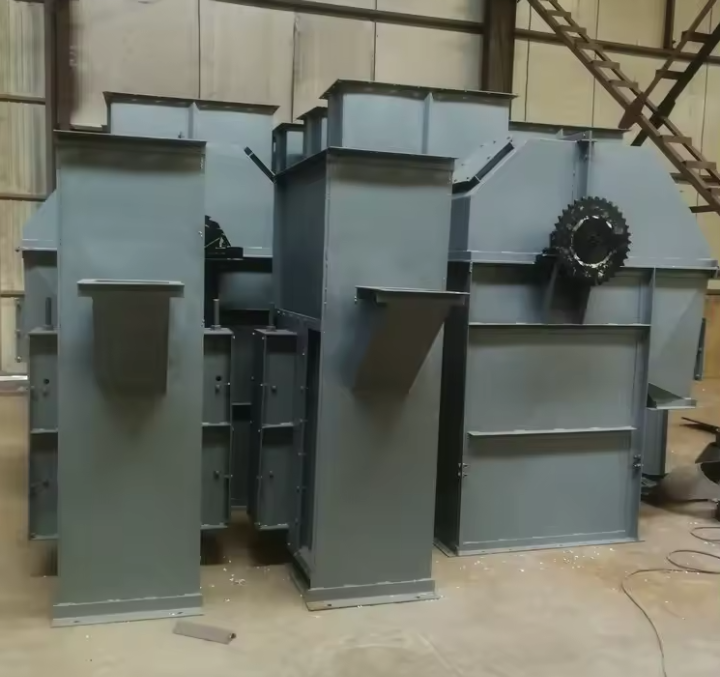
Chain Plate Elevator
Features: This type of design is more robust and can convey large, heavy, and impactful materials. It provides better material protection during the lifting process, reducing breakage.
Advantages: Strong load-bearing capacity and wide material adaptability, making it particularly suitable for use in heavy industries such as mining and metallurgy.
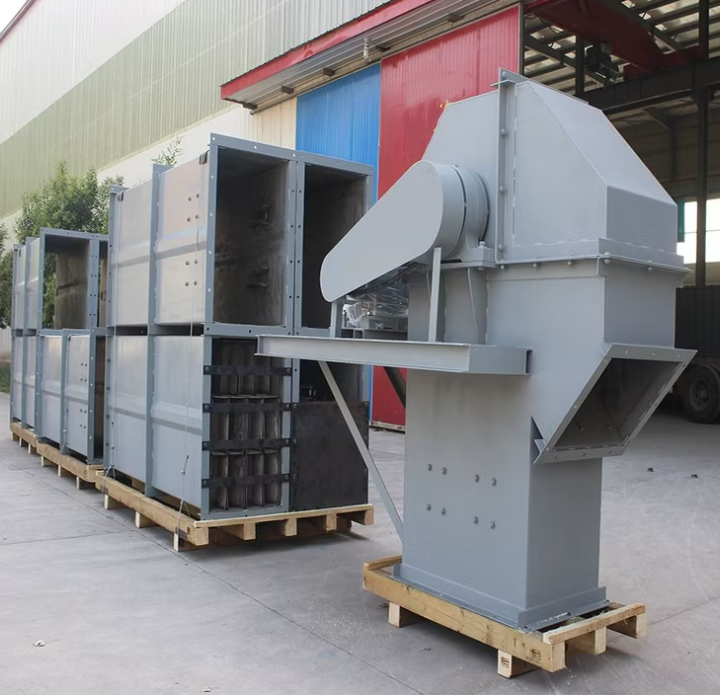
Vertical Screw Elevator
Features: Compact structure, very small footprint, fully enclosed conveying, and effective dust control. It is suitable for conveying finely flowing powdered or granular materials, such as stone dust and cement powder. Advantages: Small footprint, excellent sealing, and smooth conveying, making it a suitable alternative to bucket elevators.
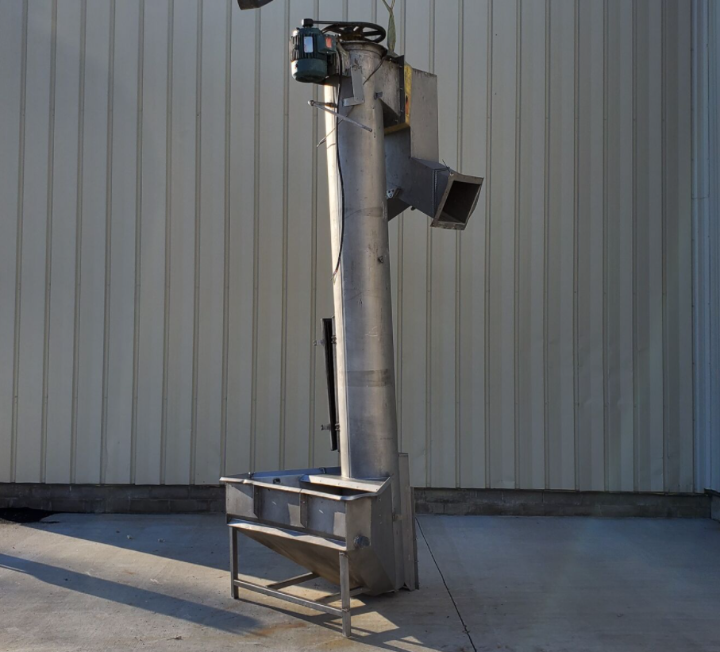
How to Select a Sand Bucket Elevator?
When selecting a sand bucket elevator, multiple factors must be considered to ensure the equipment can stably complete conveying tasks. The appropriate type should be selected based on the conveying capacity, lifting height, and applicable materials.
Conveying Capacity and Lifting Height: The conveying capacity and lifting height of a sand bucket elevator are the primary considerations when selecting a model. The conveying capacity generally refers to the mass or volume of material that the equipment needs to convey per unit time. For large conveying capacities, an elevator with a large bucket capacity and high operating speed, such as a belt bucket elevator or chain bucket elevator, is recommended. The lifting height determines the length and strength of the traction element. For higher lifting heights, a chain bucket elevator, with its sturdy chain structure and greater load capacity, is a more reliable option.
Applicable Material Characteristics: The characteristics of the material are crucial to selecting a sand bucket elevator. For dry sand or dry, fluid, fine sand, a vertical screw elevator can be used. Its fully enclosed design effectively prevents dust from flying, and its compact structure occupies a small footprint. A belt bucket elevator is also a good choice when high conveying capacity is required, offering smooth operation and low noise. For wet sand, which is damp and somewhat sticky, a belt bucket elevator is a good choice because it operates smoothly and reduces material adhesion. For coarse sand and gravel, which have large particle sizes, high specific gravity, and are highly abrasive, chain bucket elevators and plate chain elevators, with their more robust construction, should be considered. These use high-strength chains or plates as traction elements, which can withstand greater impact and wear, ensuring long-term stable operation. Plate chain bucket elevators are particularly suitable for conveying large, high-specific gravity, and impact-sensitive materials, and they also provide better material protection.

When selecting a sand bucket elevator, each type has its specific application range. Belt bucket elevators, due to their smooth operation, are suitable for applications requiring stability. Chain and plate bucket elevators, with their robust structure, excel when handling heavy, abrasive materials. Vertical screw elevators, with their compact structure and excellent sealing, are suitable for conveying fluid powdered materials. These characteristics determine their performance under different operating conditions.
